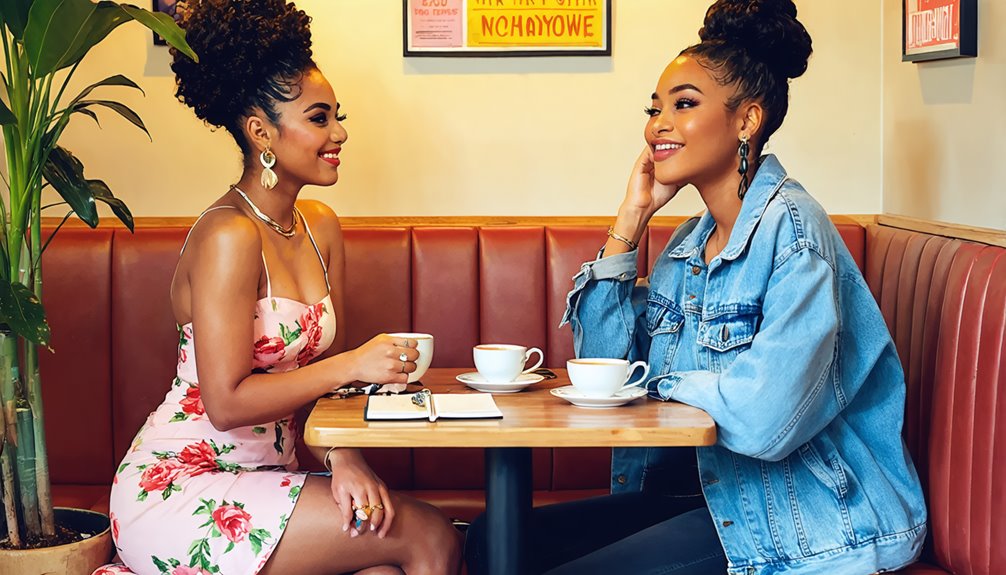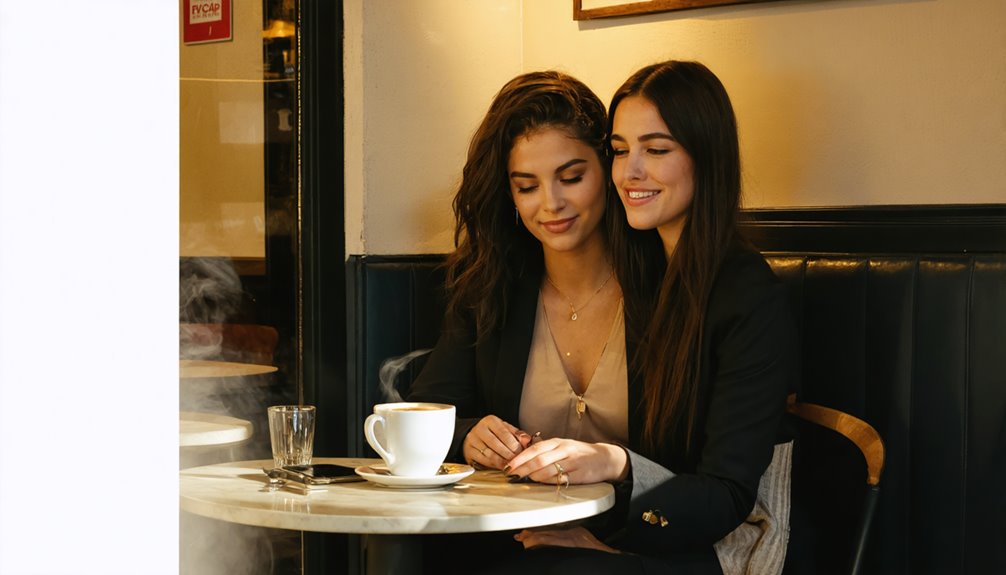Crossdresser Dating: Tips for Building Honest and Respectful Connections

We can build honest, respectful connections in crossdresser dating by aligning on language, expectations, and safety from the start. We state pronouns, share intentions—casual, exploratory, or long-term—and set boundaries around photos, privacy, and public presentation. We practice active listening, confirm consent, and choose secure platforms and public first-meeting locations. When disclosure timing is tricky, we prioritize safety and document concerns. With stigma in mind, we lean on community resources and then take the next step together…
Understanding Identity, Terminology, and Respectful Language

Although terms can feel fluid, we should align on clear definitions to build trust and avoid missteps. In dating, clarity prevents confusion and supports consent. Crossdressing refers to wearing clothing traditionally associated with another gender; it doesn’t determine orientation or identity. Gender expression describes outward presentation, which can vary by context. We confirm labels people use for themselves and avoid assumptions.
We practice pronoun etiquette: ask politely, share ours first, and use stated pronouns consistently. If we err, we correct quickly and move on. We avoid fetishizing, use person-first language, and respect privacy. Accurate terminology demonstrates professionalism and creates safer, mutually respectful interactions.
Setting Clear Intentions and Relationship Goals

Let’s set a clear framework: we define our priorities—casual dating, exploration, or long-term partnership—so expectations align from the start. We communicate boundaries early, including privacy needs, public presentation comfort, and pace, to reduce misunderstandings. We also clarify commitment levels and exclusivity standards to support informed consent and relationship stability.
Define Your Priorities
Before we plunge into profiles and messages, we set the foundation by clarifying what we want from dating and why. We assess personal priorities: authenticity, safety, discretion, and compatibility with our gender expression. We define dating criteria using measurable signals—time availability, location, relationship style (casual, long-term, consensual non-monogamy), and openness to crossdressing in public or private contexts.
We audit our bandwidth and emotional readiness, then align channel choices accordingly—apps, forums, or local events. We verify platform policies on LGBTQ+ inclusion and reporting tools. We document must-haves, nice-to-haves, and dealbreakers to guide screening. Clear priorities help us focus outreach and evaluate matches efficiently.
Communicate Boundaries Early
Once we’ve defined our priorities, we state our boundaries and intentions early to reduce friction and protect psychological safety. We outline personal limits on disclosure, public presentation, privacy, and pace, then invite reciprocal input. Research on relationship satisfaction shows early expectation-setting reduces misunderstandings and conflict. We suggest communication routines: a check-in after first dates, weekly touchpoints, and a shared protocol for sensitive topics (when, where, and channels used). We specify what support looks like during outings, what’s off-limits for photos, and how we handle introductions. We document agreements in messages to guarantee clarity, revisit them periodically, and adjust with informed consent.
Clarify Commitment Levels
With boundaries defined and communication routines in place, we set clear commitment levels to align expectations and reduce churn. We state Relationship expectations explicitly—monogamy, discretion, public presentation, and pacing. We also propose measurable Commitment timelines, like quarterly check-ins, to assess readiness for milestones such as meeting friends or cohabitation. We ask for reciprocal clarity: what support is needed when dressing, what visibility feels safe, and how often we meet.
| Topic | Example |
|---|---|
| Relationship expectations | Monogamous, public dates twice monthly |
| Commitment timelines | 90-day milestone review |
| Transparency signals | Calendar invites, shared goals doc |
We document agreements, confirm consent, and revise responsibly.
When and How to Disclose: Safety and Timing

Let’s align on best practices for disclosure: we assess personal readiness first, including emotional comfort, safety planning, and clarity on boundaries. We then choose safe settings—public spaces, trusted platforms, and check-in protocols—to reduce risk. Finally, we communicate clearly and early, using concise language about who we are and what we’re seeking to set expectations and support informed consent.
Assess Personal Readiness
Although disclosure can deepen connection, we should first assess our readiness and safety. We use a self reflection checklist to gauge comfort, boundaries, and likely questions. We verify financial readiness because dating can introduce costs for travel, presentation, and privacy tools. We clarify our goals—casual, long-term, or friendship—and confirm we can state them plainly. We practice concise disclosures and anticipate respectful follow-ups.
| Factor | Quick Gauge |
|---|---|
| Emotional bandwidth | Can we handle acceptance or decline without spiraling? |
| Privacy posture | Are digital profiles and contacts compartmentalized? |
| Financial readiness | Do we have budget for dates and contingencies? |
We proceed only when these boxes check.
Choose Safe Settings
In practice, we disclose in environments we control: public, well-lit venues or trusted online platforms with robust safety features. We prioritize locations with surveillance, staff presence, and clear exit routes. We confirm platform moderation, reporting tools, and identity verification. When possible, we involve trusted companions who know our plan and location. We stage disclosures when logistics favor privacy without isolation, like public venues with semi-private seating. We document boundaries beforehand and maintain independent transportation. We also set check-in times.
- Share limited details until consistency is verified
- Use apps with in-chat video and block features
- Choose venues near transit and visible foot traffic
Communicate Clearly Early
With safe settings in place, we set expectations early to reduce risk and prevent misunderstandings. We practice early transparency before meeting in person, using concise language that states our identity, boundaries, and goals. We share what crossdressing means to us, preferred pronouns, and comfort levels for photos or public settings. We ask for reciprocal clarity to align clear expectations on privacy and pace. We avoid oversharing sensitive details until trust is established. We document agreements in messages, confirm consent, and restate plans before a date. If responses show hesitation or disrespect, we disengage promptly and prioritize safety and emotional well‑being.
Building Trust Through Open and Honest Communication
Because trust underpins every successful relationship, we prioritize clear, consistent communication from the start. We set expectations, share context, and verify understanding. Research shows active listening and emotional transparency correlate with higher relational stability and satisfaction. We commit to accuracy, avoid assumptions, and confirm intent.
- We practice active listening: reflect key points, ask clarifying questions, and summarize agreements to reduce misinterpretation.
- We use emotional transparency: label feelings, explain triggers, and state needs without blame, which improves predictability and trust.
- We document logistics: scheduling, privacy preferences, and communication cadence, so both parties know what to expect and how to follow up responsibly.
Navigating Boundaries, Consent, and Emotional Safety
Although attraction can feel immediate, we treat boundaries, consent, and emotional safety as non-negotiable processes that evolve over time. We define emotional boundaries early, clarify language for yes/no/maybe, and confirm consent at every step. We state pronouns, presentation preferences, and disclosure limits, then revisit them regularly. We use check-ins after dates to evaluate comfort and clarify expectations. We avoid assumptions about touch, photos, or public visibility. We document agreed boundaries in messages for accountability. We leverage evidence-based consent workshops and trauma-informed guidelines to strengthen skills. If someone dismisses limits or applies pressure, we pause contact and reassess compatibility.
Creating Safe Online and Offline Dating Spaces
Building safety into our dating spaces starts with platform selection, privacy controls, and verification practices that reduce risk without compromising agency. We choose services with audited moderation practices, clear reporting workflows, and safety-by-design features. We favor tools that let us control visibility, filter messages, and verify identities without exposing sensitive data. Offline, we plan predictable venues and share itineraries.
- Use apps with encrypted messaging, rate-limiting, and human-in-the-loop review to deter harassment.
- Enable opt-in video verification and granular photo controls; disable geotagging.
- Meet in staffed, well-lit locations; confirm transport plans; set check-in times.
We document incidents, escalate early, and adjust settings promptly.
Managing Stigma, Privacy, and Community Support
We’ve strengthened dating safety with smart tools and plans; now we address the social realities that shape our experiences. We prioritize privacy by controlling identifiers, separating profiles, and using encrypted messaging. For stigma coping, we plan disclosure intentionally, document incidents, and use evidence-based stress-reduction techniques. We leverage peer support through moderated groups and vetted mentors, which research links to better mental health and adherence to boundaries. We recognize legal protections vary by jurisdiction; we track anti-discrimination statutes, harassment laws, and reporting channels. Finally, we map community resources—trans-competent clinicians, hotlines, and local organizations—to guarantee rapid referrals when concerns escalate.
Nurturing Healthy Connections and Long-Term Growth
Even as we pursue matches, we align our dating habits with practices that sustain mutual respect, psychological safety, and long-term compatibility. We set expectations early, verify consent, and check alignment on identity, boundaries, and lifestyle. We value mutual growth by reviewing progress and adjusting behaviors, not identities. We prioritize emotional resilience through transparent communication and conflict de-escalation.
- Establish cadence: schedule check-ins, agree on privacy, and define public vs. private presentation norms.
- Co-create safety: share red flags, safe-words, and exit plans for dates and travel.
- Measure outcomes: track satisfaction, repair rates, and duration between conflicts to inform decisions and prevent drift.
Conclusion
As we navigate crossdresser dating, let’s lead with clarity, consent, and safety. We state our identity, share pronouns, and set goals early—casual, exploratory, or long-term. We disclose thoughtfully, prioritize public first meetings, and use platforms with robust privacy controls. We practice active listening, confirm consent at every step, and respect boundaries on photos, presentation, and privacy. We document incidents, leverage community and professional support, and manage stigma proactively. With trust and communication, we build sustainable, respectful connections.
